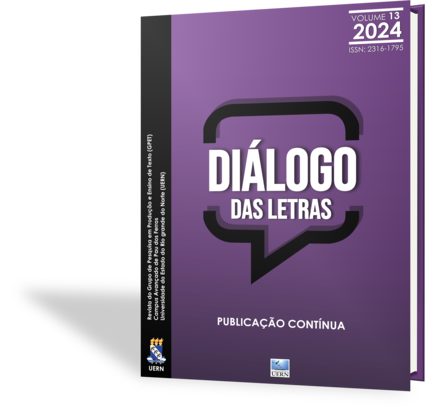Escrita, movimentos enunciativos e afasia: marcas de um recomeço
DOI:
https://doi.org/10.22297/2316-17952024v13e02419Keywords:
Escrita, Afasia, Movimentos EnunciativosAbstract
ABSTRACT
This research aims to investigate enunciative movements produced by an individual with aphasia during writing workshops. The study considered Jakobson's (1976) proposition on aphasias and Endruweit's (2022) enunciative perspective on writing. This is a qualitative study; for corpus collection, eight writing workshops were conducted with a participant from an aphasic social group - the Interdisciplinary Social Group (GIC) at the Federal University of Santa Maria (UFSM). Among the developed productions, one activity was selected for analysis. The results revealed enunciative movements of suppression and insertion with varying predominance and frequency. Additionally, a new movement in writing, referred to here as testing, was observed. Finally, it was found that aspects of the subject's aphasic speech are reflected in their writing, and specific writing movements associated with difficulties stemming from Jakobsonian similarity disorder were identified.
Keywords: Writing. Aphasia. Enunciative Movements.
Downloads
References
BENVENISTE, E. Últimas aulas no Collège de France: 1968 e 1969. São Paulo: Editora UNESP, 2014.
ENDRUWEIT, M. L. Repensando a escrita. Jundiaí: Paco, 2022.
FEDOSSE, E. Memórias do Grupo Interdisciplinar de Convivência – constituição e desenvolvimento. In: DELLA MÉA, C. H. P.; FEDOSSE, E. (org.). Convivência nas afasias: movimentos e experiências em grupo interdisciplinar. Santa Maria, RS: Editora UFSM, 2022. p. 15-37.
FLORES, V. N. et al. Dicionário de linguística da enunciação. São Paulo: Contexto, 2009.
FRANÇA, A. I. O que é afasia? In: OTHERO, G. A; FLORES, V. N. (org.). O que sabemos sobre a linguagem: 51 perguntas e respostas sobre a linguagem humana. São Paulo: Parábola, 2022. p. 15-20.
JAKOBSON, R. Towards a linguistic classification of aphasic impairments. In: JAKOBSON, R. Selected writings II: word and language. Haia: Mouton, 1971. p. 289-306.
JAKOBSON, R. A afasia como um problema linguístico. In: COELHO, M.; LEMLE, M.; LEITE, Y. (org.). Novas perspectivas linguísticas. Petrópolis: Vozes, 1973. p. 43-54.
JAKOBSON, R. Dois aspectos da linguagem e dois tipos de afasia. In: JAKOBSON, R. Linguística e comunicação. São Paulo: Cultrix, 1976. p. 34-62.
Downloads
Published
How to Cite
Issue
Section
License
Copyright (c) 2024 Diálogo das Letras

This work is licensed under a Creative Commons Attribution 4.0 International License.
A Diálogo das Letras não se responsabiliza por conceitos e opiniões emitidos pelos autores, tampouco manifesta, necessariamente, concordância com posições assumidas nos textos publicados. Além disso, os dados e a exatidão das referências citadas no trabalho são de inteira responsabilidade do(s) autor(es). Ao submeterem seus trabalhos, os autores concordam que os direitos autorais referentes a cada texto estão sendo cedidos para a revista Diálogo das Letras; ainda concordam que assumem as responsabilidades legais relativas às informações emitidas.
























